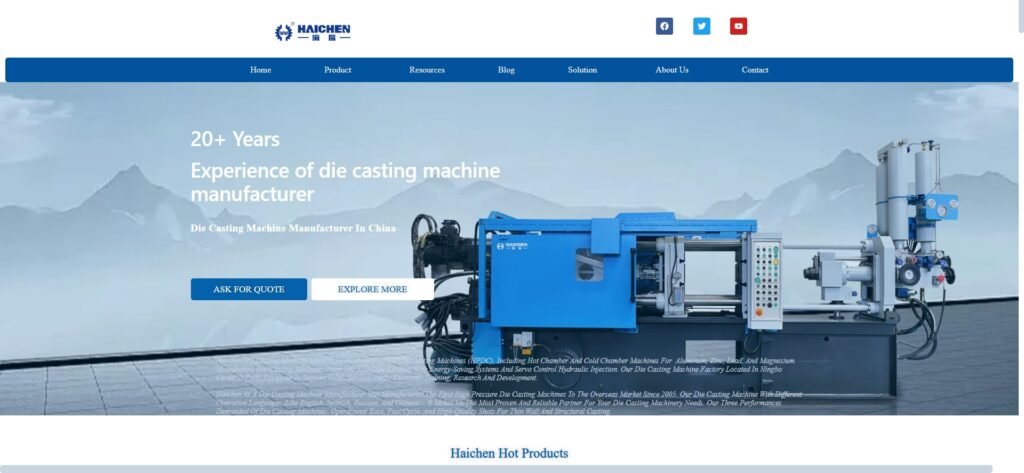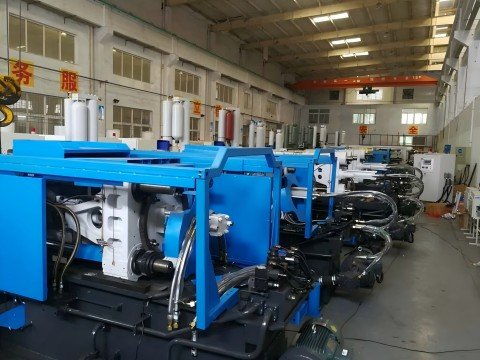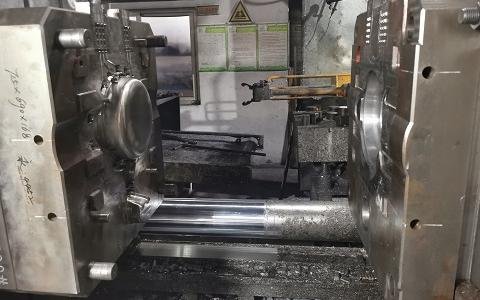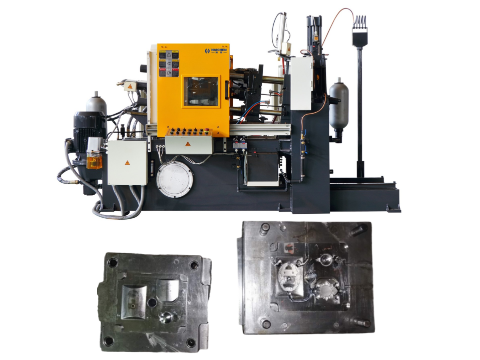The basic technological process of die casting mold: the liquid metal is firstly poured into the cavity of the die at low or high speed, and the die has a movable cavity surface.
It is forged under pressure with the cooling process of the liquid metal, which can not only eliminate the shrinkage and porosity defects of the blank.
But also make the internal structure of the blank reach the broken grains in the forged state.
Die casting mould installation is a complex and highly technical job, which needs to be operated in strict accordance with specifications.
To ensure the normal operation of the mold and the quality of the product.
Preparation before the installation of the die casting mould
- Die casting mould inspection
- Equipment inspection
- Site Preparation
- Mould installation steps
- Fixing the mold
- Adjust the clamping clearance
- Install the cooling system
- Debugging the mould
Die casting mould inspection
First of all, check whether the mold is intact, whether the parts are complete, and whether the surface is clean and dust-free.
Secondly, confirm that the mold matches the model of the die-casting machine to avoid installation failure caused by the mismatch of mold size or structure.
Finally, check the accuracy of the mold, including whether the dimensions of key components.
Such as cavities, cores, guide pillars, and guide bushings meet the requirements.

Equipment inspection
Before installing the mold, it is necessary to check whether the lifting equipment, hook bolts, and screw holes of the die-casting machine are in good condition to ensure that the equipment can safely carry the mold.
It is also necessary to confirm that the hydraulic system, cooling water channel and lubrication system of the die casting machine are working properly.

Site Preparation
Clean the mounting surface of the die casting machine to ensure that it is flat and free of debris.
Also, prepare the necessary tools and auxiliary equipment, such as screws, gaskets, lubricants, etc.
Mould installation steps
Hoisting the mould Use lifting equipment to lift the mold onto the die-casting machine, taking care to avoid damage to the mold.
Place the mold on the moving mold holder and make sure that the centerline of the mold is aligned with the injection chamber flange table.
Fixing the mold
Fix the top of the mold on the guide rail, and increase the fixing strength through screws.
Ensure that the slider stroke of the mold is flexible and the positioning is accurate.
Adjust the clamping clearance
Adjust the clamping clearance of the mold to make it meet the design requirements.
Use the clamping trial method to check whether the mold is completely closed to ensure that there is no gap.
Install the cooling system
Make sure the cooling water is clear, connect the cooling water pipes and check the tightness.
For special molds, such as those with cooling channels, thermally conductive components need to be installed to reduce cooling costs.
Debugging the mould
Start the die-casting machine for no-load debugging and check whether the mold is running smoothly.
Adjust the slider stroke and the length of the push rod to ensure that the mold action is coordinated.

Precautions for mould installation
- Regular Inspection and Maintenance
- Mould preheating and heat preservation
- Parameter Adjustment & Optimization
- Operational Training & Safety Specifications
Regular Inspection and Maintenance
Regularly check the integrity of lifting equipment, bolts and bolts to ensure safety when lifting heavily.
It is best to check the cleanliness and lubrication of the mold, and clean the burrs or impurities on the surface of the mold in time.
Mould preheating and heat preservation
Preheat the mould before production to ensure that the mold temperature meets the process requirements.
If necessary, use a holding furnace or other heating equipment to preheat the mold.
Parameter Adjustment & Optimization
Adjust injection parameters, cooling time, and lubrication frequency according to production needs.
For molds with complex structures (e.g. molds with sliders or core-pulling mechanisms), special attention should be paid to the coordination of their movements.

Operational Training & Safety Specifications
Die casting operators need to be professionally trained and familiar with operating procedures.
The most important thing is to follow safe operating procedures to avoid mold damage or personal injury due to improper handling.
Common problems and solutions for mold installation
- Loose clamping
Cooling system leakage - Abnormal slider action
- Mold surface scratches
Loose clamping:Check whether the clamping gap is too large, and readjust the clamping parameters if necessary.
Cooling system leakage:Check the cooling water pipe connection for leakage and replace the damaged parts in time.
Abnormal slider action:Check whether the slider stroke is flexible, adjust the slider positioning or replace the damaged parts if necessary.
Mold surface scratches:Use gasket protection during mold handling to avoid scratches caused by direct contact.

Haichen‘s die casting molds
Die Casting Mold Definition Haichen’s die casting mold consists of two parts, separated according to the draft slope of the product.
Molten metal is injected from the stationary end and cooled and solidified into a die casting.
The die casting stays at the moving end, and the moving end ejects the die casting through the ejector pin, and sprays lubricant on the mold after taking it out.
Secondly, in the early stage of mold design, Haichen will confirm the mold flow analysis and product analysis report.
And start with a simple mold design until the product drawings are approved by the customer; Analyze the shape, structure and size of die casting materials, product parts from the perspective of die casting processing performance accuracy.

Haichen mould installation Experience
The installation of die-casting mold is a systematic project, which needs to be strictly controlled from mold inspection, equipment preparation to installation and commissioning.
Through scientific and standardized operation and timely maintenance.
It can effectively improve production efficiency, prolong the life of molds, and ensure product quality.
At the same time, die casting engineers need to continuously optimize the process parameters according to production needs to improve the overall production level.




